In 2024, navigating the complexities of crypto security will remain paramount for enthusiasts and investors alike. As the digital asset landscape continues to evolve, the importance of robust security measures cannot be overstated. Among the arsenal of tools available to safeguard one’s digital assets, hardware wallets have emerged as a stalwart defense against cyber threats. In this guide, we delve into the battle of the titans: Trezor vs Ledger.

- What Is a Crypto Wallet?
- Software Wallet Vs. Hardware Wallet
- Ledger Wallet
- Trezor Wallet
- Trezor or Ledger: Comparison
- Trezor vs Ledger: User Interface
- Trezor vs Ledger: Features
- Trezor vs Ledger: Hardware
- Trezor vs Ledger: Supported Currencies
- Trezor vs Ledger: Ease of Use
- Trezor vs Ledger: Functionality
- Trezor vs Ledger: Tools
- Trezor Vs. Ledger: Security
- Trezor vs Ledger: Price
- Trezor vs Ledger: Open-Source
- Trezor vs Ledger: Mobile App
- Trezor vs Ledger: Password
- Trezor vs Ledger: Supported OS
- Trezor vs Ledger: FAQs
- Conclusion
What Is a Crypto Wallet?
A crypto wallet serves as a digital application designed to securely store and manage one’s cryptocurrencies. The concept of a crypto wallet mirrors that of a traditional wallet, where one would typically store cash and cards. However, instead of holding physical currency, a cryptocurrency wallet stores the cryptographic keys required to access and authorize transactions on various blockchain networks.
In essence, a crypto wallet provides users with a means to interact with their digital assets, enabling them to send, receive, and manage their cryptocurrencies efficiently. With the rise of cryptocurrencies, the importance of secure and user-friendly wallet solutions has become increasingly evident.

In the early days of cryptocurrency, conducting transactions often involved manually entering lengthy cryptographic keys. However, modern crypto wallets have significantly simplified this process, making blockchain technology more accessible to the masses. Today, users can rely on intuitive software interfaces that streamline the management of their digital assets.
Notably, the inception of crypto wallets traces back to the early days of Bitcoin. The first known crypto wallet belonged to Satoshi Nakamoto, the mysterious creator of Bitcoin.

Following Nakamoto’s development of the Bitcoin protocol, the first transaction occurred between Nakamoto and Hal Finney, a notable figure in the cryptocurrency community. Finney, who corresponded with Nakamoto, received 10 Bitcoins as part of a test transaction, marking the beginning of the cryptocurrency phenomenon.
Read more: How To Connect Ledger To MetaMask: Detailed Guideline
Software Wallet Vs. Hardware Wallet
Software Wallet
Software wallets are available in the form of applications for both desktops and mobile devices and offer a convenient and accessible means to manage digital assets. Notably, some software wallets offer integration with cryptocurrency exchanges, streamlining the process for users who frequently engage in trading activities.
Mobile wallets, a subset of software wallets, bring added versatility by enabling quick payments in physical stores through near-field communication (NFC) or QR code scanning. Compatible with both iOS and Android devices, these mobile wallets have become increasingly popular due to their ease of use and portability.

Prominent examples of software wallets include Trezor, Electrum, Ledger, and Mycelium, each offering its own unique set of features and security measures. It’s important to note that software wallets are generally categorized as hot wallets, meaning they are connected to the internet and thus more susceptible to cyber threats compared to their hardware counterparts.
Hardware Wallets
Hardware wallets, a popular choice among cryptocurrency enthusiasts, provide a secure means to store private keys and conduct transactions. Resembling USB drives, these devices offer several features that ensure the safety of digital assets.
One of the key advantages of hardware wallets is their ability to disconnect private keys from the user’s device. By plugging the hardware wallet into a computer or mobile device, users can initiate cryptocurrency transactions without directly exposing their private keys. This feature is particularly significant as it prevents hackers from intercepting keystrokes or capturing screen activity during transactions.
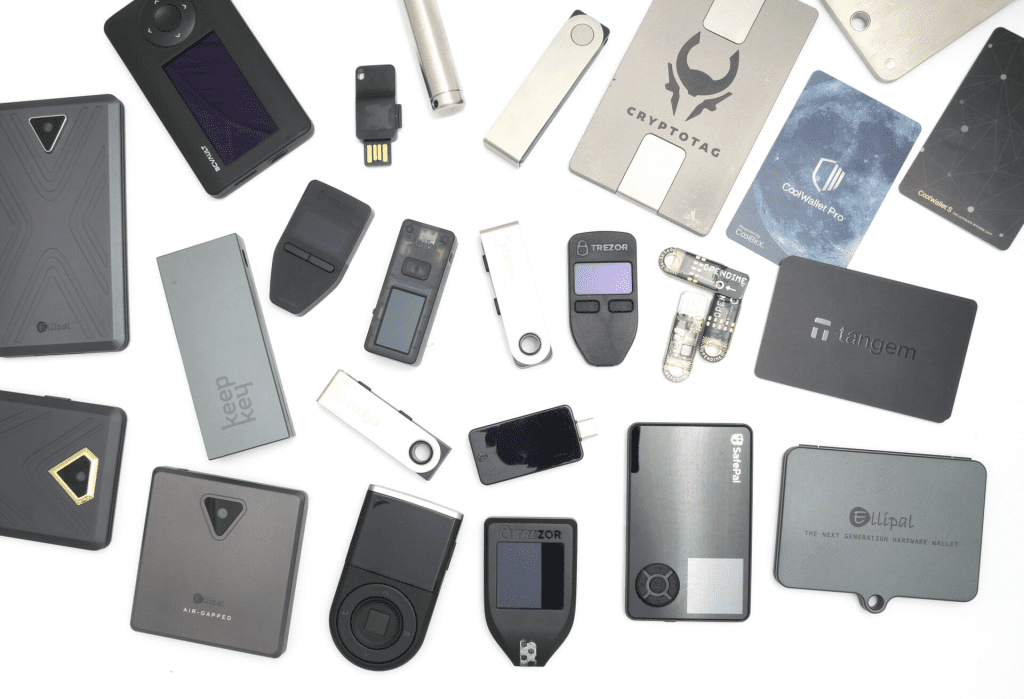
Typically priced between $100 and $200, hardware wallets such as Ledger and Trezor dominate the market with their robust security features and user-friendly interfaces. These devices are commonly referred to as cold wallets due to their offline nature, only establishing an active connection when plugged in for transactions.
Ledger Wallet
Overview
Ledger is a leading company specializing in physical cryptocurrency wallets and stands out for its commitment to providing users with secure and reliable storage solutions for digital assets. Founded by eight experts boasting backgrounds in embedded security, cryptocurrencies, and entrepreneurship, the company has emerged as a trusted name in the industry.
Headquartered in France, Ledger operates globally, with a significant presence in San Francisco. Its range of hardware and cold wallet options offers users diverse choices for safeguarding their crypto holdings. Resembling USB drives or other storage devices, Ledger wallets are designed with a focus on security, promising users peace of mind when managing their digital assets.
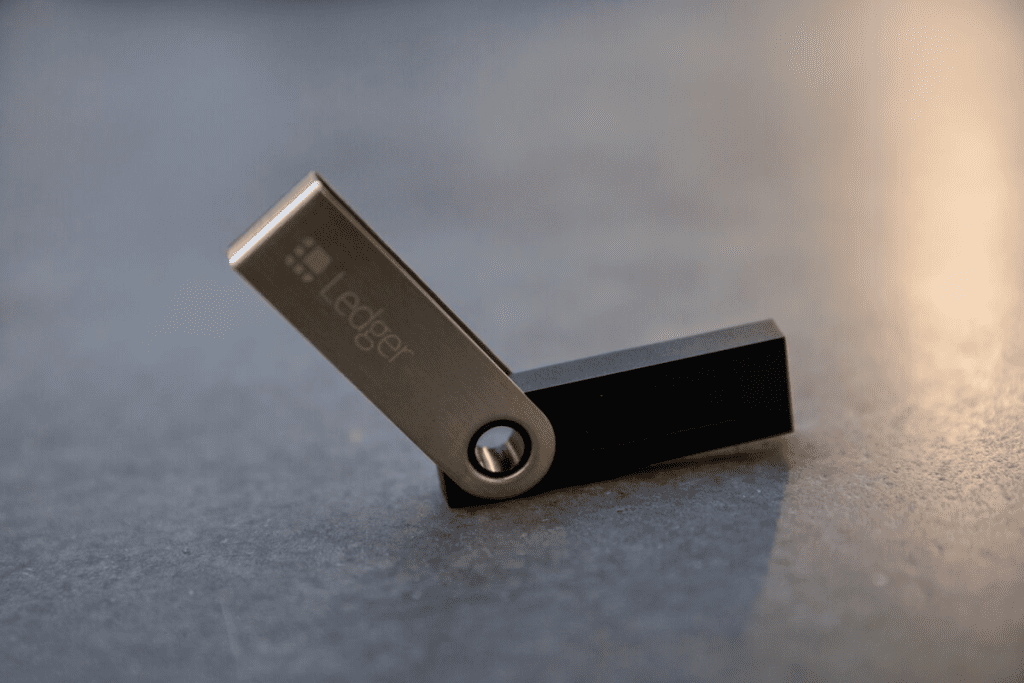
The company’s mission revolves around creating secure solutions tailored to blockchain applications, reflecting its dedication to advancing the safety and accessibility of cryptocurrency transactions. Ledger’s emphasis on innovation and user-centric design has earned it a reputation as a frontrunner in the field.
Pros and Cons of Ledger Wallet
Pros
- Highly Secure and Reliable
- Sovereign Control of Private Keys
- Access to Decentralized Applications (dApps) and NFT Management
- Comprehensive Crypto Management Services
- Mobile App with Bluetooth Connection
- Robust Crypto Education Library
- Cost-Effectiveness
- New Tab
The Ledger Wallet is renowned for its robust security measures, providing users with a safe haven for their digital assets. With features designed to thwart emerging online security threats, it offers peace of mind to users concerned about the safety of their funds.
One of the standout advantages of the Ledger Wallet is its emphasis on giving users full control over their private keys. This ensures that users maintain sovereignty over their funds, mitigating the risk of unauthorized access or third-party interference.
Beyond basic storage capabilities, the Ledger Wallet offers users access to decentralized applications (dApps) and facilitates non-fungible token (NFT) management. This expands the utility of the wallet beyond mere storage, empowering users to engage with the broader cryptocurrency ecosystem.
From buying and staking coins to swapping assets, the Ledger Wallet provides users with a suite of crypto management services, enabling seamless interaction with various digital assets.
The inclusion of a mobile app with Bluetooth connectivity enhances the accessibility of the Ledger Wallet, allowing users to manage their funds on the go with ease and convenience.
Recognizing the importance of education in the cryptocurrency space, the Ledger Wallet offers users access to a comprehensive crypto education library. This empowers users with the knowledge they need to make informed decisions about their digital assets.
Despite its advanced features and security measures, the Ledger Wallet remains one of the cheapest cold wallets available on the market, making it an attractive option for budget-conscious users.
Lorem ipsum dolor sit amet, consectetur adipiscing elit. Ut elit tellus, luctus nec ullamcorper mattis, pulvinar dapibus leo.
Cons
One notable drawback of the Ledger Wallet is that its software isn’t entirely open-source, which may raise concerns for users who prioritize transparency and community-driven development.
In the event that an exchange associated with the Ledger Wallet is hacked or ceases operations, users may potentially lose access to their funds, highlighting the importance of exercising caution and due diligence when selecting exchange partners.
Unique Features of Ledger Nano X
Ledger unveiled its Nano X device in 2019. Designed as a USB-type device, the Ledger Nano X serves as a secure offline storage solution for users’ cryptocurrency coins and non-fungible tokens (NFTs), aligning with Ledger’s commitment to bolstering digital asset security.
Distinguished by its Bluetooth-enabled feature and USB-C connection, the Ledger Nano X offers seamless compatibility across multiple operating systems, including macOS, Windows, iOS, and Android, ensuring accessibility for a wide range of users.
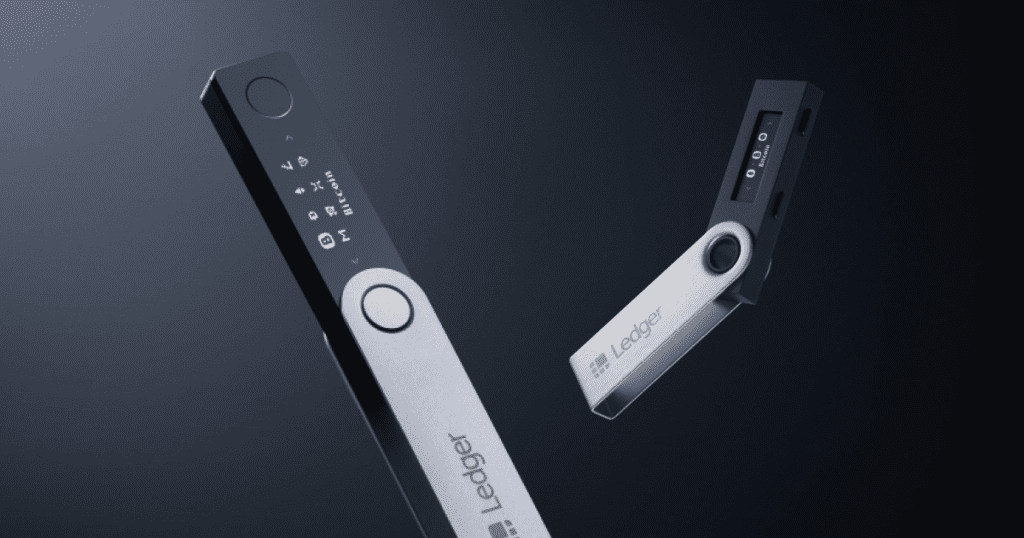
One of the device’s standout features is its expansive storage capacity, boasting accommodation for over 5,500 different tokens. Additionally, users can manage up to 100 different applications on the Ledger Nano X, providing versatility and convenience in managing various digital assets.
With its robust security features and user-friendly interface, the Ledger Nano X has garnered significant attention among cryptocurrency enthusiasts and investors seeking to safeguard their assets. Priced at $149, the Ledger Nano X represents a valuable investment for those prioritizing security and accessibility in managing their digital wealth.
Trezor Wallet
Overview
Trezor is a leading name in the crypto hardware wallet industry, offering users a secure and convenient method to store and manage their digital assets. Developed by Satoshi Labs, a Prague-based company established in 2013 by Pavol Rusnak, Marek Palatinus, and Alena Vránová, Trezor has been instrumental in revolutionizing crypto security since the advent of Bitcoin.
The Trezor wallet, also known as cold storage, provides robust security features to safeguard cryptocurrencies against unauthorized access and potential cyber threats. Its journey began with the development of secure solutions for storing private keys, culminating in the launch of Trezor One in 2014—the inaugural cryptocurrency hardware wallet to hit the market.
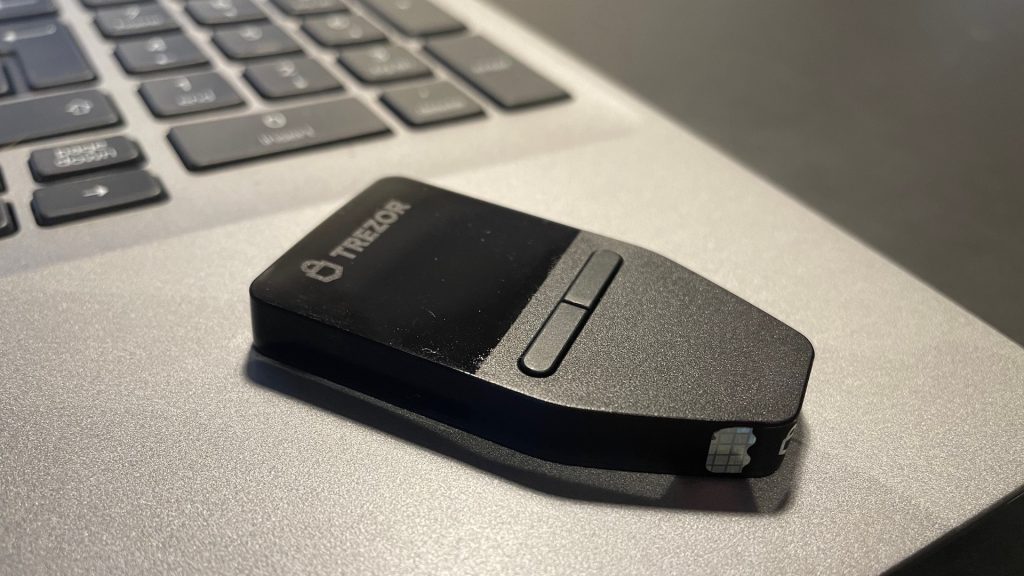
Designed to cater to the needs of both long-term investors and active traders, Trezor offers a user-friendly interface coupled with unparalleled security measures. Whether users seek to safeguard their digital wealth for the long haul or navigate the volatile cryptocurrency landscape through frequent trading, Trezor stands as a tangible and reliable solution.
Pros and Cons of Trezor Wallet
Pros
- Top-Notch Security
- Proven Security Track Record
- User-Friendly Interface
- Broad Cryptocurrency Support
- Portfolio Tracking
The Trezor Wallet is renowned for its robust security measures, offering users peace of mind when it comes to safeguarding their digital assets. With features such as encryption and two-factor authentication, it provides layers of protection against unauthorized access.
One of the standout advantages of the Trezor Wallet is its proven track record in maintaining the security of users’ funds. Over the years, it has withstood various hacking attempts, earning the trust of the cryptocurrency community.
Navigating the Trezor Wallet is a seamless experience, thanks to its intuitive user interface. Whether you’re a novice or an experienced cryptocurrency enthusiast, you’ll find the wallet’s interface easy to understand and navigate.
Another noteworthy aspect of the Trezor Wallet is its extensive support for a wide range of cryptocurrencies. From Bitcoin to Ethereum and beyond, users have the flexibility to store various digital assets in a single wallet.
For users keen on keeping a close eye on their investment portfolios, the Trezor Wallet offers convenient portfolio tracking features. This allows users to monitor the performance of their assets within the wallet itself, eliminating the need for external tools.
Cons
While the Trezor Wallet offers unparalleled security and features, it does come at a price. Users need to invest in purchasing the hardware wallet, which can be a deterrent for those looking for free storage solutions.
Despite its broad cryptocurrency support, there are certain blockchains and digital assets that are not compatible with the Trezor Wallet. This limitation may pose challenges for users with diverse cryptocurrency holdings.
Unlike some other wallets in the market, the Trezor Wallet lacks mobile compatibility, restricting users to desktop or laptop usage. For individuals who prefer managing their assets on the go, this could be seen as a drawback.
Unique Features of Trezor Model T
The Trezor Model T hardware wallet offers robust protection for digital assets, safeguarding private keys against potential threats. With its intuitive touchscreen interface, users are afforded seamless navigation and swift responsiveness, enhancing the overall experience of managing crypto investments.
One of the paramount features of the Model T is its emphasis on security, providing users with a high level of assurance regarding the safety of their assets. By utilizing this device, individuals can shield their cryptocurrency holdings from various risks, including theft, hacking, and other online security vulnerabilities.
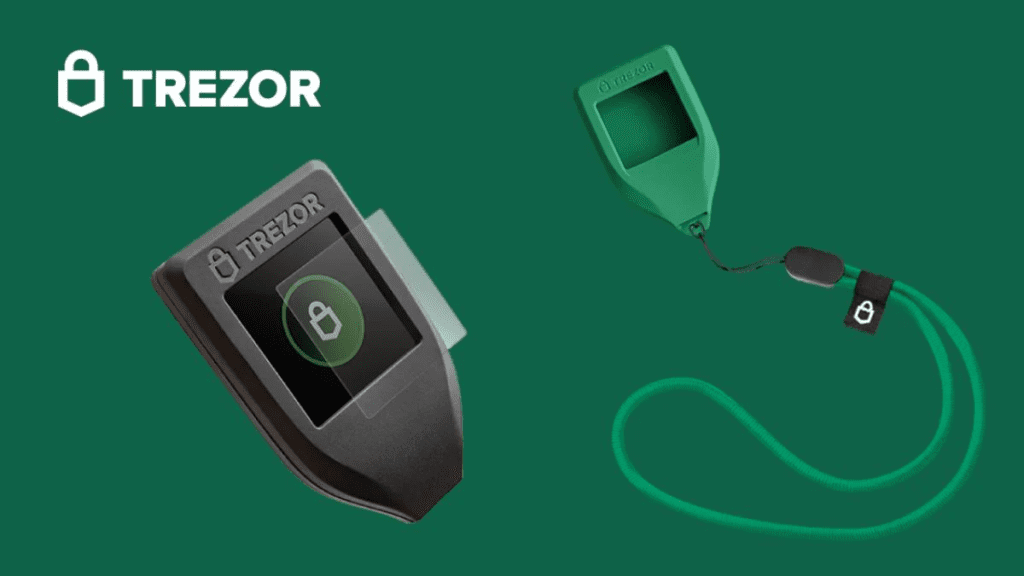
The peace of mind offered by the Trezor Model T extends to both seasoned cryptocurrency traders and novices looking to enter the rapidly expanding digital asset space. Regardless of experience level, users can trust in the device’s capabilities to secure their investments effectively.
Trezor or Ledger: Comparison
| Trezor | Ledger | |
| Supported Currencies | 1456 coins on model T1289 1289 coins on model One | Over 5,000 coins |
| Price | $59 to $179 | $79 to $279 |
| NFTs | Yes | Yes |
| Staking coins | Yes | Yes |
| Connectivity | USB-C for Model TUSB-A for Model One | Bluetooth, except Nano S PlusUSB-C for all model |
| Mobile App | Yes | Yes |
Trezor vs Ledger: User Interface
Ledger and Trezor wallets prioritize simplicity without compromising on security, offering straightforward setup procedures bolstered by stringent account protocols. Notably, both platforms implement rigorous measures such as account verification and passphrase configuration, ensuring an additional layer of protection against unauthorized access.
Trezor vs Ledger: Features
Both Trezor and Ledger wallets connect to devices via USB cables. However, Ledger devices, characterized by their sleek steel appearance, resemble conventional USB storage devices, while Trezor devices, housed in lighter plastic casings, boast unique shapes.

When examining the display capabilities, the Trezor Model One and Ledger Nano S Plus and Nano X all sport a 128×64-pixel display. However, the disparity lies in the premium models. Trezor’s flagship Model T flaunts a color touchscreen with a resolution of 240×240 pixels, while Ledger’s top-tier Stax boasts a larger greyscale touchscreen measuring 400×672 pixels.
Moreover, Ledger stands out with its optional Bluetooth functionality available in the Nano X and Stax models, a feature absent in Trezor wallets.
Trezor vs Ledger: Hardware
Trezor wallets are powered by an ARM Cortex-M3 processor, ensuring efficient performance across their range of models. The screen resolutions offered by Trezor devices vary depending on the specific model.
In contrast, Ledger wallets operate on a distinct hardware setup. They utilize a proprietary operating system known as BOLOS (Blockchain Open Ledger Operating System) and are equipped with a dedicated chip called Secure Elements. This Secure Element chip plays a pivotal role in executing all programs within the BOLOS ecosystem, ensuring robust security measures for Ledger users.
Trezor vs Ledger: Supported Currencies
When it comes to cryptocurrency support, Ledger outshines Trezor with a significantly larger repertoire. Ledger supports over 5,000 cryptocurrencies, whereas Trezor offers support for 1,289 or 1,456 cryptocurrencies, depending on the specific model being used.
Users of both Ledger and Trezor can securely store popular cryptocurrencies such as Bitcoin (BTC), Ethereum (ETH), Litecoin (LTC), Dogecoin (DOGE), and Stellar (XLM). However, Ledger’s Nano S, Nano X, and the newer Ledger Stax all provide support for the same set of coins, while Trezor’s One model supports fewer cryptocurrencies compared to the Model T.

Importantly, there are notable cryptocurrencies that the Trezor One does not support, including Cardano (ADA), Ripple (XRP), Monero (XMR), Eos (EOS), Tezos (XTZ), and Binance Chain (BNB). Conversely, all of these coins can be securely stored on both Ledger devices.
Trezor vs Ledger: Ease of Use
When it comes to ease of use, both Trezor and Ledger hardware wallets offer straightforward setup processes and intuitive interfaces, although there are some differences worth noting.
Trezor and Ledger devices prioritize security with strict account verification and passphrase configuration protocols, ensuring users can set up their wallets with confidence. However, users transitioning from touchscreens and larger displays may find the smaller screens and physical buttons on lower-end models a bit challenging to navigate initially. Despite this, the overall setup and usage experience remain largely consistent across both brands.

Comparing specific models, the Ledger Nano X, albeit slightly larger than the Nano S Plus, doesn’t significantly differ in user experience due to its increased button spacing. The inclusion of Bluetooth connectivity in the Nano X adds convenience by eliminating the need for wired connections, enhancing the user experience.
On the other hand, the Trezor Model T boasts a color touchscreen, whereas the Ledger Stax opts for a larger greyscale display. Despite lacking color, the Stax’s larger screen offers enhanced usability, making it easier to accurately press buttons and read information. Additionally, the Ledger Stax’s Bluetooth capability further augments its ease of use, a feature absent in the Trezor Model T.
Trezor vs Ledger: Functionality
In terms of functionality, Ledger and Trezor offer distinct yet comprehensive features to cater to the diverse needs of cryptocurrency users.
Ledger’s platform, Ledger Live, is accessible across desktop and mobile devices, with a browser extension currently in beta testing. The Ledger Nano X model stands out for its seamless integration with the mobile app via Bluetooth, providing users with convenient access to exchanges and decentralized applications (DApps).

On the other hand, Trezor provides a desktop application, a browser extension, and an upcoming Android app. However, it’s worth noting that Trezor is not compatible with Apple’s mobile operating system, limiting its accessibility to iOS users. Additionally, Trezor prioritizes security by abstaining from offering Bluetooth connections, a measure its developers cite as crucial for safeguarding user assets.
When it comes to additional functionalities such as staking coins and accessing NFT (Non-Fungible Token) marketplaces, Trezor requires third-party integrations. In contrast, Ledger Live applications seamlessly incorporate these features into their platform, offering users a more streamlined experience.
Trezor vs Ledger: Tools
Ledger, known for its comprehensive approach to user education, hosts a treasure trove of resources under the banner of Ledger Academy. This educational platform equips users with device tutorials, trending crypto content, and detailed explainers covering a wide spectrum of topics, from blockchain fundamentals to navigating common scams. Ledger Academy serves as a valuable knowledge hub, empowering users to navigate the complex world of cryptocurrencies with confidence.
In contrast, Trezor’s support center, while functional, may seem comparatively modest. However, it does offer a collection of helpful articles guiding users through the process of utilizing Trezor devices and accompanying software. Despite its simplicity, Trezor ensures that its users have access to essential resources to maximize the utility of their devices.
Trezor Vs. Ledger: Security
Trezor devices are engineered upon a foundation of single-chip architecture, while Ledger devices boast a dual-chip setup. Ledger’s distinctive dual-chip configuration incorporates a second chip, characterized by a bank-grade secure element (SE).
Moreover, Ledger employs a proprietary blockchain open ledger operating system (BOLOS), distinguished by its open-source nature. However, unlike Trezor, Ledger’s firmware operates within a closed-source environment, meaning it remains inaccessible for third-party review or vulnerability testing. Despite this distinction, both platforms uphold stringent security standards to mitigate potential risks.
Furthermore, the user experience diverges slightly between Trezor and Ledger devices. Trezor’s entry-level model, the Trezor One wallet, requires users to input their password via an integrated keyboard—a process that adds an extra layer of authentication. In contrast, Ledger users input their passwords directly on the hardware, streamlining the authentication process while maintaining robust security measures.
Trezor vs Ledger: Price
Trezor distinguishes itself by offering two primary devices, while Ledger expands its lineup to three models. At the entry level, Trezor introduces the Trezor One, priced at $59, whereas Ledger’s counterpart, the Nano S Plus, commands a slightly higher price point of $79. Both devices feature dual physical buttons and compact OLED displays. However, the Trezor One’s support for a narrower range of cryptocurrencies may influence investors holding assets such as Ripple (XRP), Monero (XMR), or Cardano (ADA) to opt for the Ledger Nano S.
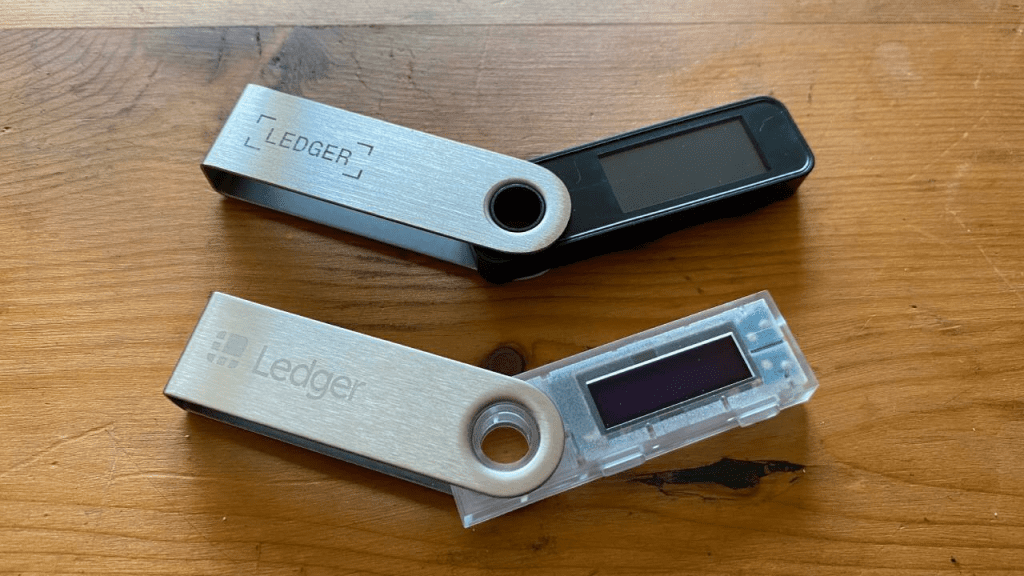
For users seeking enhanced functionality, Ledger offers the Nano X, priced at $149—a step up from its predecessors. The Nano X distinguishes itself with the addition of Bluetooth connectivity.
At the premium end of the spectrum, both Trezor and Ledger unveil devices equipped with touchscreen interfaces. Trezor’s flagship offering, the Model T, boasts a vibrant color touchscreen, albeit with a smaller display size compared to its Ledger counterpart. In contrast, Ledger introduces the Stax, featuring a larger grayscale touchscreen. While the Stax’s screen size may offer improved visibility, the absence of color may limit its appeal to some users.

In terms of pricing, Trezor’s Model T emerges as the more affordable option at $179, presenting a compelling choice for users seeking advanced functionality without breaking the bank. Conversely, Ledger’s Stax commands a higher price tag of $279, reflecting its premium features and larger display.
Trezor vs Ledger: Open-Source
Trezor, renowned for its commitment to transparency and community collaboration, embraces an open-source ethos. The Trezor wallet leverages open-source software and firmware, allowing developers and enthusiasts alike to scrutinize, modify, and contribute to the platform’s codebase.
In contrast, Ledger adopts a proprietary operating system known as BOLOS (Blockchain Open Ledger Operating System). Unlike Trezor, Ledger’s firmware operates within a closed-source environment, shielding the platform’s codebase from public scrutiny. While Ledger’s device specifications and details are accessible to all users, the underlying firmware remains proprietary, limiting external contributions and modifications.
Trezor vs Ledger: Mobile App
Ledger devices seamlessly integrate with the Ledger Live application, available for download across desktop and mobile platforms. Whether on a desktop or a mobile device, Ledger Live serves as a centralized hub for all Ledger device operations. Notably, the initial setup process for Ledger devices necessitates connection to Ledger Live.
Trezor adopts a different strategy for mobile compatibility. While Trezor does not currently offer a dedicated mobile application, users can leverage alternative solutions to access their devices remotely. For mobile users, Trezor provides compatibility via a Chrome extension or the Trezor Bridge, tailored to different operating systems.
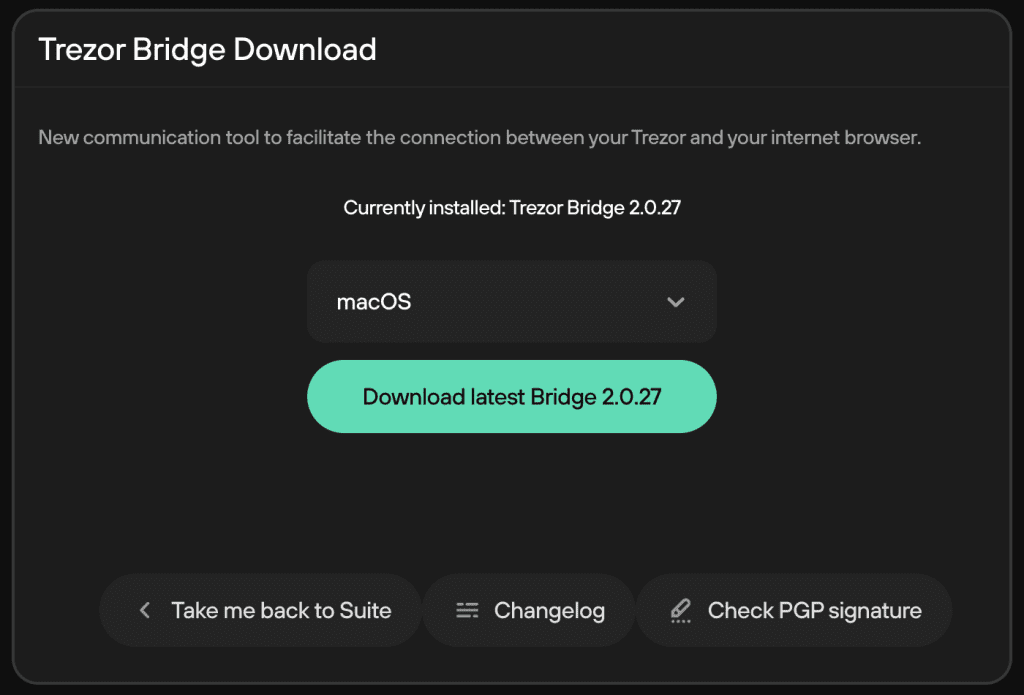
Additionally, Trezor offers the Trezor Suite as a desktop application, furnishing users with portfolio insights and integrated exchange functionalities. While this approach may lack the direct mobile integration of Ledger Live, Trezor’s suite of tools ensures that users can manage their assets seamlessly across multiple devices.
Trezor vs Ledger: Password
Trezor and Ledger diverge, each with its own implications for user convenience and security.
In the case of Trezor, accessing the wallet requires connecting the device to a laptop to input the password. While this method offers a straightforward approach to authentication, it also introduces a potential vulnerability. By relying on a laptop for password input, Trezor users may expose themselves to security risks associated with the device’s connection to external networks.
On the other hand, Ledger adopts a different strategy for password management, employing a separate PIN to authenticate access to the wallet. Unlike Trezor, Ledger users can input the PIN directly using the device’s physical keys, eliminating the need for a laptop connection.
Trezor vs Ledger: Supported OS
In terms of compatibility, both wallets ensure connectivity across Linux, Windows, and Mac computers. Nevertheless, there’s a divergence in mobile connectivity options. Trezor users can exclusively connect to Android devices via the mobile browser, whereas Ledger offers a mobile app for both iOS and Android platforms.
Trezor vs Ledger: FAQs
Trezor and Ledger: which wallet is better?
Two prominent contenders in this arena are Trezor and Ledger. Both offer robust features and security measures, catering to the needs of crypto investors. Trezor, renowned for its commitment to transparency and affordability, presents an appealing option for investors prioritizing these factors.
On the other hand, Ledger distinguishes itself with its user-friendly interface and advanced features tailored to meet the evolving needs of the crypto market.
Can Trezor or Ledger be hacked?
Hardware wallets such as Trezor and Ledger are widely considered as the pinnacle of security in the realm of cryptocurrency storage. However, despite their robust encryption and protective measures, these devices are not impervious to all forms of attack.
One notable incident that highlighted the importance of proactive security measures occurred with Ledger. This breach, while not directly related to the compromise of cryptocurrency funds stored on Ledger devices, served as a stark reminder of the potential consequences of lax security practices.
Regarding price, which wallet should I choose?
Trezor, of course. Trezor offers two primary models: the Trezor Model One and the Trezor Model T. The Trezor Model One, priced at $69, provides a basic yet reliable solution for securely storing cryptocurrencies. Meanwhile, the Trezor Model T, priced at $219, offers enhanced features and a more advanced user experience, making it a preferred choice for users seeking additional functionalities.
On the other hand, Ledger boasts a diverse lineup of wallets, including the Ledger Nano S Plus and the Ledger Stax. The Ledger Nano S Plus, priced at $79, presents an affordable entry point into hardware wallet ownership while still delivering robust security features. Conversely, the Ledger Stax, priced at $279, offers a premium experience with advanced functionalities such as staking, appealing to users with more sophisticated needs.
Conclusion
Both Trezor and Ledger have established themselves as trusted guardians of digital assets, offering user-friendly and secure hardware wallets.
Ledger, with its diverse lineup of three device options, stands out for its versatility and comprehensive feature set. The inclusion of a larger touchscreen on its premium model enhances user interaction and accessibility, while the availability of a dedicated mobile app and iOS connectivity underscores Ledger’s commitment to convenience and accessibility. So the victory in the Trezor vs Ledger competition belongs to Ledger. Hopefully Coincu’s article has helped you make more reasonable choices for yourself.
| DISCLAIMER: The information on this website is provided as general market commentary and does not constitute investment advice. We encourage you to do your own research before investing. |























